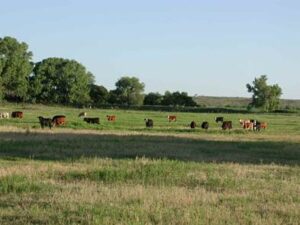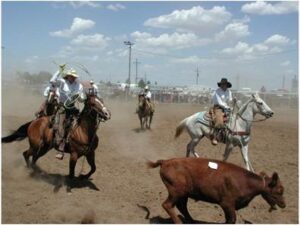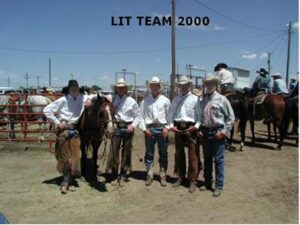


Today’s Ranch Life
Today, just as 125 years ago, cattle provide the foundation for LIT Ranch operations. Stocker cattle, from across the south, arrive at the ranch and grow from a calf to a yearling. This grazing period is from 6-9 months and the typical animal will gain 300 pounds. The ranch runs around 5000 head and the cattle are finished at one of the Texas Beef feedyards in the northern Texas Panhandle…
The basic mechanics of a ranch haven’t changed in 100 years. The hallmarks of a well ran ranch is the people. The LIT is blessed with true herdsmen, dedicated to assuring the interests of the cattle 365 days a year. The critical factors are herd health, good water, and good groceries. Stocking rates can vary from year to year. but in a drought, one steer on the ranch can be too many. Cattle are herded to the pastures at the beginning of the grazing season and then gathered for shipment after they either reach the target weight or after frost in the fall.
There are new technologies on the LIT. Many cattle are individually identified and those data points are stored in databases for quick retrieval and analysis. Laptops are present at most brandings to record valuable information on the cattle. Genetic markers are being identified to allow the LIT Ranch to design the type beef that best matches the needs of beef consumers. Carcass information from the processing plant is delivered online and transferred “hands free” between databases.
Then there is fun. The LIT cowboys field a roping team and their performance makes for some colorful action.
A rodeo event also provides an opportunity for people from all the ranches to meet and socialize. Descendants of cowboys who worked on the old ranching companies gather once a year in Channing and Dalhart to celebrate XIT Days and Matador Days. A few old timers still make an appearance.